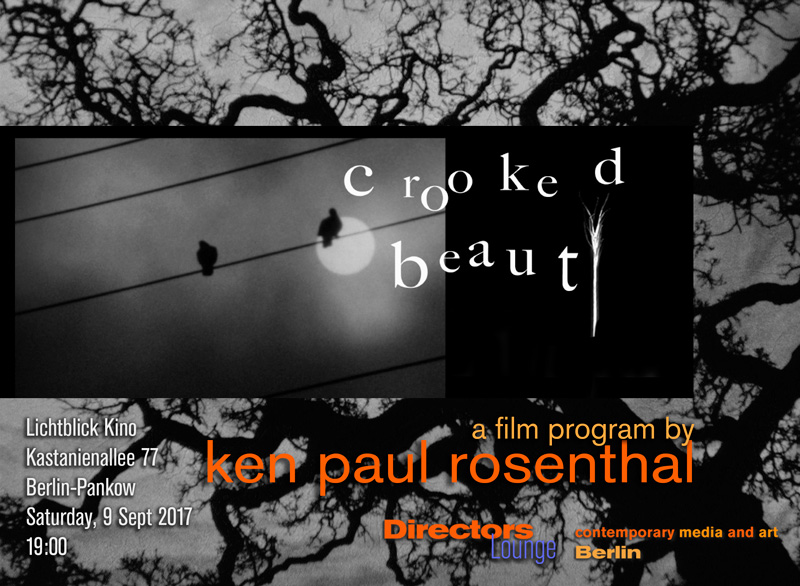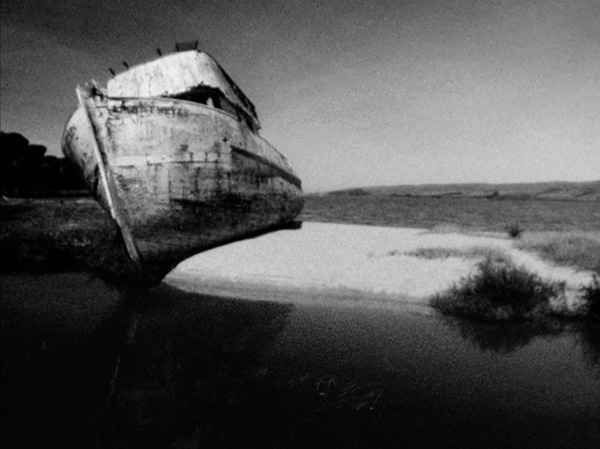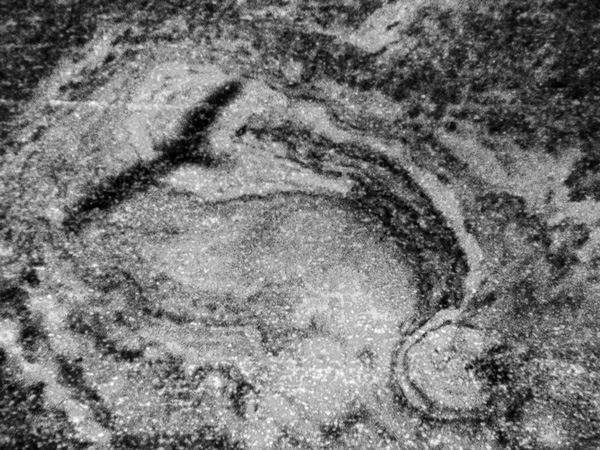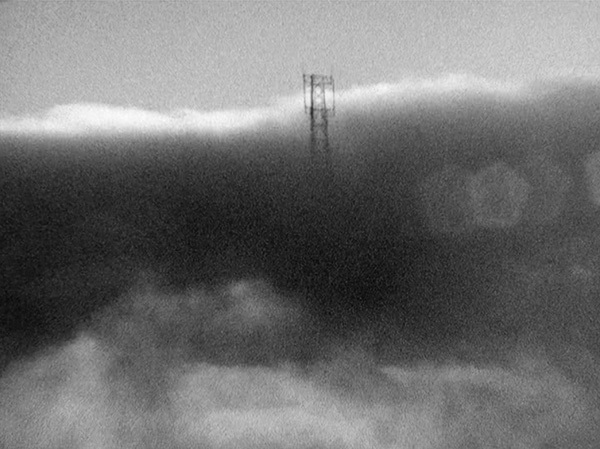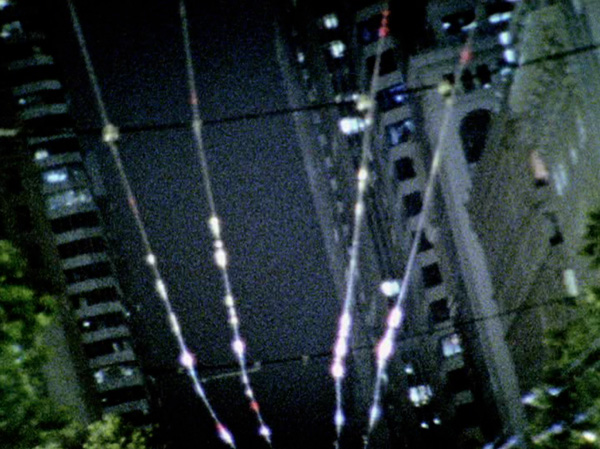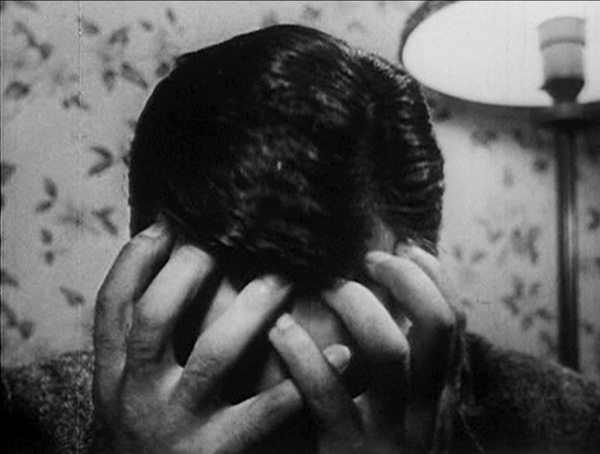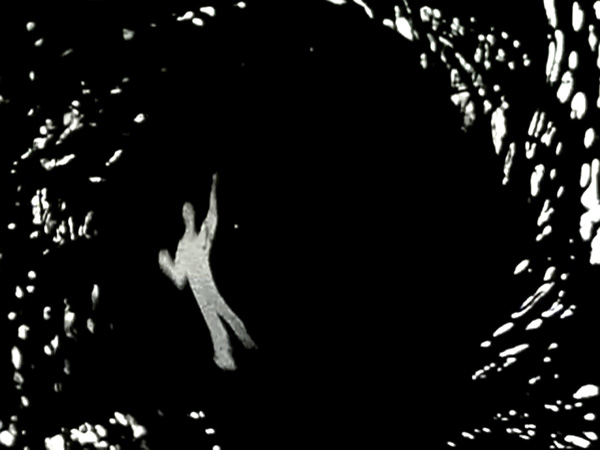directors lounge monthly screenings
crooked beauty
films by
ken paul rosenthal
Lichtblick-Kino
Kastanienallee 77
10435 Berlin-Prenzlauer Berg
Ken Paul Rosenthal is a filmmaker from San Francisco who combines two genuine interests with his new films: the search for cinematic beauty in landscapes, light and texture as well as his research and engagement in what he refers to as, "radical mental health". He will present two films from his Mad Dance Mental Health film trilogy that address integrating "dark" abilities of the soul, however, they are very different formally and conceptually.
"Crooked Beauty" (2010) was entirely shot with Super-8 and digitally edited. Rosenthal extensively explored the San Francisco Bay Area for this film, mostly shooting natural landscapes, old wooden houses and rural areas in search of arresting natural phenomena such as light, moving shadows and billowing fog formations. For the filmmaker, the nature of this area, with its quick and drastic weather changes, diverse microclimates and geographic ruptures of earthquakes and moving tectonics is more than just a metaphor for the human soul—it is made for renewal and adaptations.
What he is trying to express in these arresting color and black-and-white images can be connected to Mike Davis' writings on the topography of Southern California (Ecology of Fear). Davis comes to the conclusion, that the civilization of Southern California is badly adapted, with an infrastructure based on the steadiness of steel and concrete, on water supply and permanent electric power, as well as based on the denial of its explosive mixture of natural hazards and social contradictions. In addition, the changes of climate and tectonics that Davis warns of in 1998 did not yet consider the more rapid changes coming through climate change.
Ken Paul Rosenthal draws a line from the natural disturbances of the local topography to the psychological and social conditions of the human mind trough the story of the artist and mental health activist Jacks Ashley McNamara. She is the protagonist of the story, which has been drawn from interviews the filmmaker conducted with McNamara,. Starting with her childhood and teenage experiences of heightened receptivity for both beauty and sadness, and an unstable surrounding parenting, the narrative follows several stages of what could be called medical history. Ecstatic clairvoyance is followed by the first breakdown, hospitalization and conventional psychiatric treatment with heavy medications, until she finds alternative therapy and new ways to care about her self. The entire story, told as a linear scenario, is interwoven, illuminated, sometimes contradicted and sometimes illustrated by Rosenthal's Super-8 images displaying a beautiful tonality with high contrasts and an often pronounced grain, frequently in time lapse.
The term "illuminations" refers to the colorful illustrations of the medieval bible. These copies were hand-made by monks and illuminated by devoted artists who used gold and bright primary colors. Much like those old book illustrations, Rosenthal's images tell their own story, breaking the linearity of text not only with another dimension but with a multiplicity of meanings; references to nature, and pictorial self-references inside of the cinematic time-continuum. With a rhythmic montage and an incredible flow, the artist has constructed a whole visual world, a filmic present tense that consists during the film-time.
The protagonist, Jacks Ashley McNamara, appears only briefly on screen in a portrait-like setting at the beginning of the film, reading, and thus starting the narration. This gives the following voice-over a strong presence, the once provided glimpse of her diegetic presence will continue, and stay with her over the whole film. The only other point in the film where the image refers to McNamara directly is shortly before the end of the film when we see some of her drawings and paintings.
In the middle of the film, when Jacks starts to talk about her present, the success to find a place in the world as an artist, researcher of the mind and activist, the narrated story becomes multi-linear. Never a happy end, she describes her present as continuos search for grounding, as repeated going through darkness to find her final strength and her ways to deal with the dangerous gift of her perceptions. Here and at this story-time, the intellectual discourse of Ken's images becomes apparent and meets the story line of Jacks' reflections on another level. When she starts to talk about her nature never adapting to a regular job, which would require her to fit in and perform the same routine every day over years, her personal reflection becomes a political statement, evident to the viewer by their experiences of the images of the film. The many walks of Ken through the San Francisco Peninsula, the experiences of dusk and dawn, city and landscape, clouds and fog, sun, shadow and rain merge with the story that was told over several hours by Jacks during their joint interview sessions.
"In Light, In!" works on a very different level. The images consist entirely of found footage educational films from the Prelinger Archives. Ken Paul Rosenthal employed "film continuity" editing strategies to create episodes that almost become narratives. Most of the scenes show actors of different ages exhibiting different stages of distress. If trying to give an account: First, there appears to be some sadness in the characters, followed by minor acts of violence, after which a dark cloud seems to comes over the faces, with the effects of retreat or irrational behavior. A sequence of a train and other tracking shots is followed by encounters with doctors and treatments, which seems to increases the crisis in the subsequent scenes, until, the encounter with caring people finally brings back reason. Trying to put the scenes into language, however, seems to over-simplify the complexity of actions, edits and meanings.
Knowing, it is educational film footage, adds another meaning to the film. It could well be material from Hollywood B-movies, but that would create a very different message, even though the actors would possibly act in the same ways. Just knowing, the purpose of showing distress or outrage is not a plot, not a story-line that would come to a turning point, gives a different significance to the display; it raises the question, how actors and directors tried to create those scenes from "daily life" for educational purposes using the language of mainstream cinema.
As I understand from Ken, he created categories of key emotions for each scene, in order to structure the material for editing (as he did for the scenes of nature, landscapes and cityscapes in Crooked Beauty). The fluidity of the editing by the artist, the unresolved story of each episode that fades out to the next episode, creates a dense atmosphere, heightened by Zoe Keating's original cello score. Her music creates a suspenseful accompaniment to the story that never rises to a culmination point.
The use of found footage has become a common strategy in experimental filmmaking. Christoph Giradet, Maya Schweizer and Casper Stracke use found footage extensively or exclusively. Appropriated material is commonly used to critique media, mainly of mainstream cinema. A more general media critique declares, "Why should I use my own camera, if everything has been done already?" — "Passage à l'acte" by Martin Arnold, a classic example of this genre, both criticizes the conventional (mind) setting of the nuclear family being represented in Hollywood and the intrinsic violence of this setting and their connection with sexual undertones.
Ken Paul Rosenthal's film is much less connected with technical experiments (such as the retarded motion and repetition of Arnold), but as much an out-cry against the emotional and social conventions of every day normality. It is a kind of heightened normality where average actors tried to covey ordinary life settings for educational purposes in films from 50's70's, edited with the standard rules of continuity, while confronting it with an open form of narrativity. In this way, the revolt against the constraints of both society's social norms and its medical practices that are part of Ken Paul Rosenthal's matter called radical mental health activism receives a strong, non-linear and multi-faceted voice.
The presentation will be followed by a bonus, a glimpse on Rosenthal's new work in progress. This program is sure to be a remarkable experience and will inspire a lively discussion with Ken about using fine art filmmaking as a tool for mental health advocacy.
Director Bio
Ken Paul Rosenthal is a cinema artist and mental health advocate whose current work explores the geography of madness through the regenerative power of nature, urban landscapes, home movies, and archival footage from social hygiene films. His films are visually sensual, emotionally intelligent works of art that also function as tools for personal and societal transformation. His films, Crooked Beauty and In Light, In! have collectively won eighteen awards, screened in sixty film festivals, and been presented in person at dozens of peer support networks, universities, mental health symposium and community events worldwide.
Artist Links
http://www.maddancementalhealthfilmtrilogy.com/
http://www.kenpaulrosenthal.com
Press Links:
Lichtblick-Kino - http://www.lichtblick-kino.org/
Directors Lounge - http://directorslounge.net
 Back Back
|
